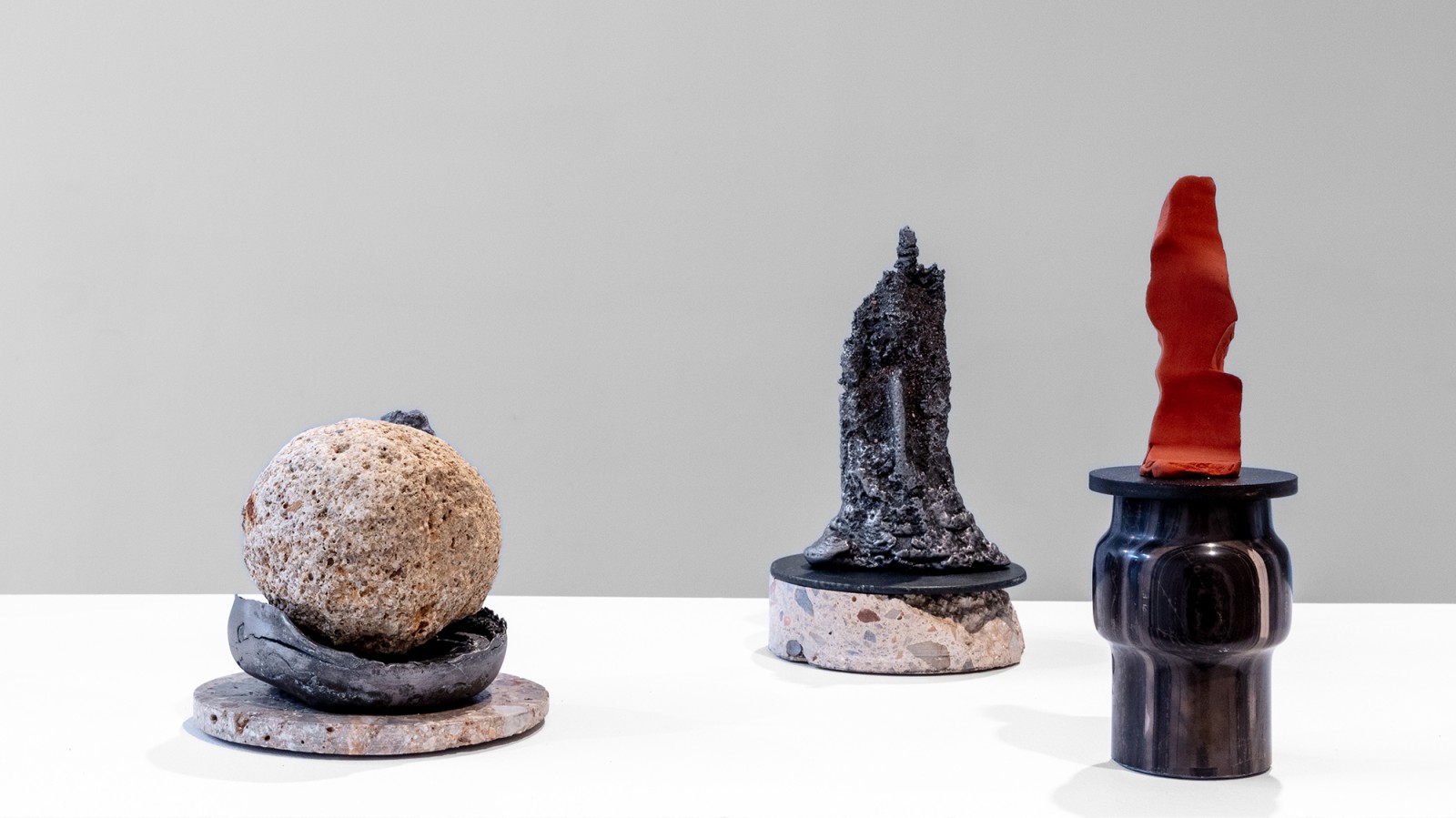I Sense Your Presence and it is a Beautiful Feeling
Olsen
Gadigal Country Sydney Australia 2024
SEE THE SERIES TIME TRAVELS THROUGH THE BODY HERE
SEE THE SERIES GHOST SENSATIONS / MACHINE DREAMS HERE
SEE THE SERIES MEMORY FOLDS LIKE SKIN HERE
SEE PSYCHOPOMPS 2021-2022 HERE
SEE PSYCHOMPOMPS (LARGE) 2022 HERE
SEE ANAFI FIGURES 2023 HERE
SEE LIBYAN SEA FIGURES HERE
I sense your presence and it is a beautiful feeling brought together six conceptually cohesive, materially diverse bodies of my recent photographic and sculptural work. The six bodies of work approached the entanglements between the contemporary social afterlives of ancient objects, individual and collective embodied memory, the body, and the materiality of place, from different perspectives.
Blending an expanded field of lens-based practices and sculptural processes, with museum collection engagements and photographic archive investigations, the range of works and the dialogues between them revealed some of the ways in which I combine practical and academic research methodologies in my research-rich practice.
I aim to make works that speak firstly to our bodies. In this pursuit I combine a honed aesthetic with a visual language of rupture. When I use the term aesthetic here, I am not referring to conceptions of beauty or taste, rather I am invoking its earlier and much older meaning, which refers to something as being perceivable by the senses. With this as a kind of guiding principle I create, combine, and configure objects, images and environments with visceral corporeal intensity that seek to remind us that deep time and ancient pasts are alive and active in all of us. In doing so I return again and again to the human figure.
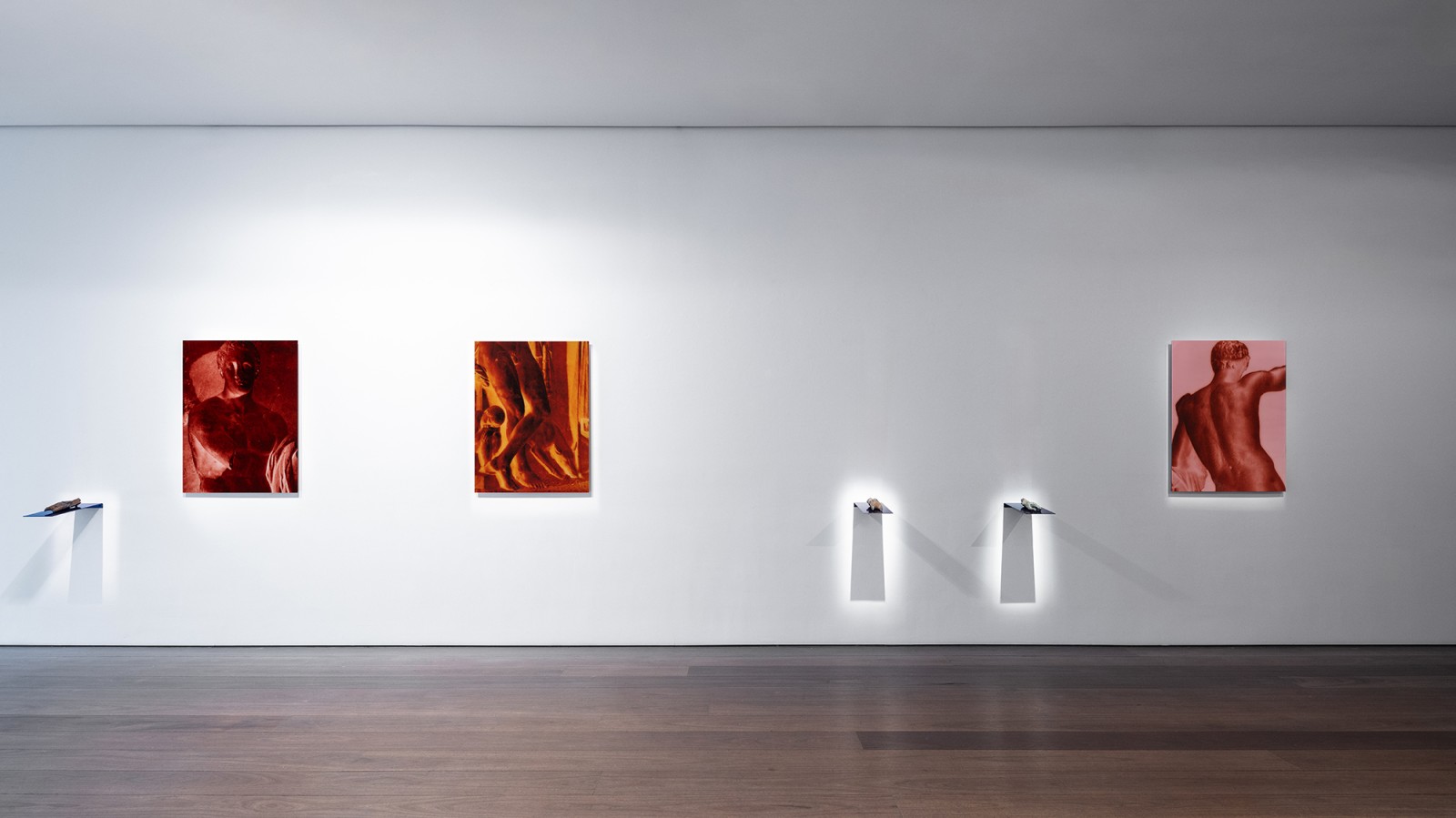
I sense your presence and it is a beautiful feeling comprised more than eighty individual works distributed across four large linked exhibition spaces. It included a ten-meter black and white photographic installation titled Ghost Sensations / Machine Dreams composed of ten 100 x 100 cm spectral renderings of deserted archaeological sites in the center of typically tourist teeming contemporary Athens. I captured these multiple exposure images on film, in the hour before dawn, during the period of the 2021 coronavirus curfews. Installed tightly side by side the ten large pigment prints manifest as a kind of epic monochromatic horizon of the perceived permanent made fleeting.
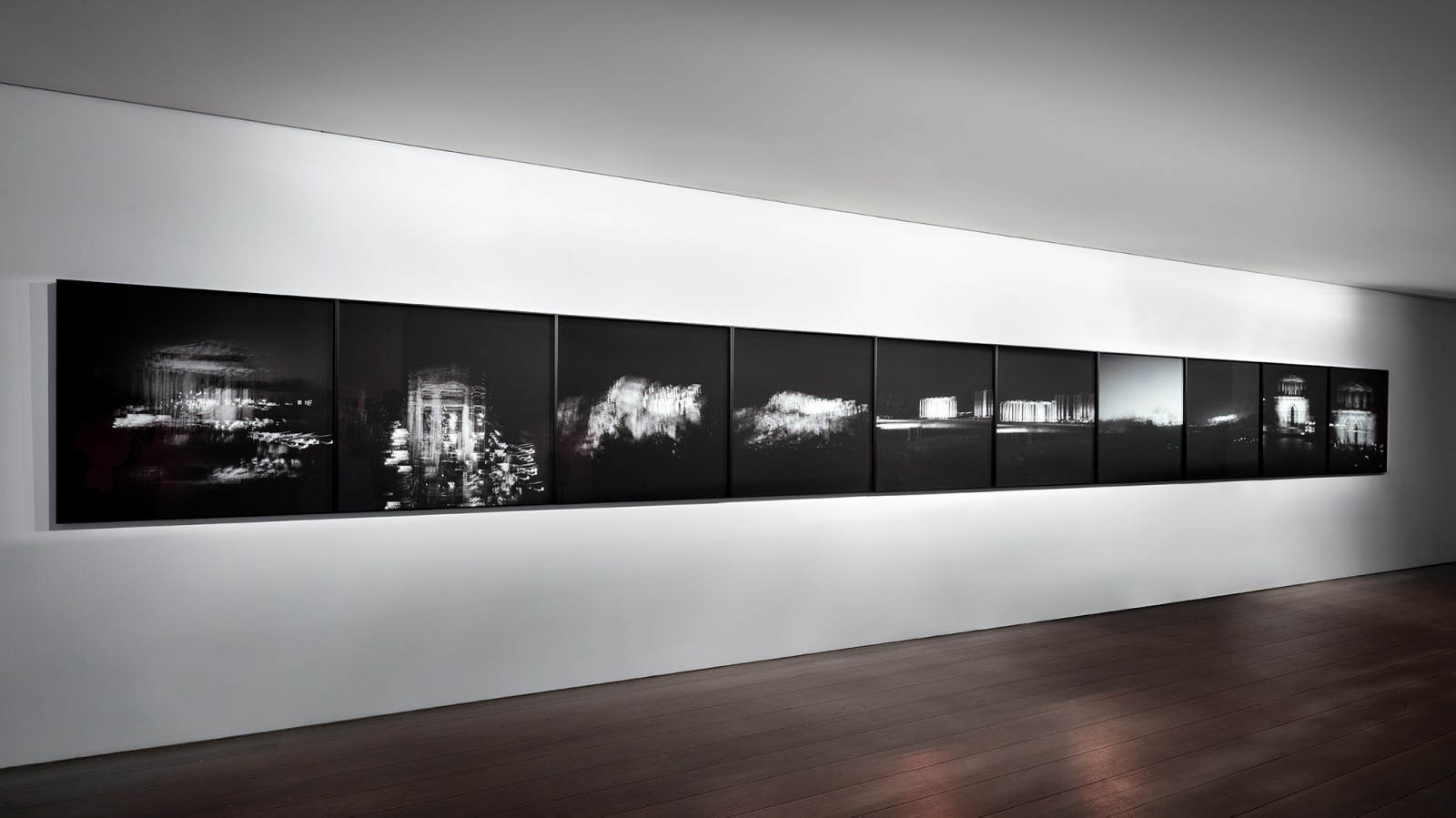
In a stairwell linking two of the main exhibition spaces was a small suite of intimately scaled, photo mediated, folded brass, low-relief sculptures, in which classical European ideations and idealisations of the body fold in on themselves creating seductive grotesqueries.
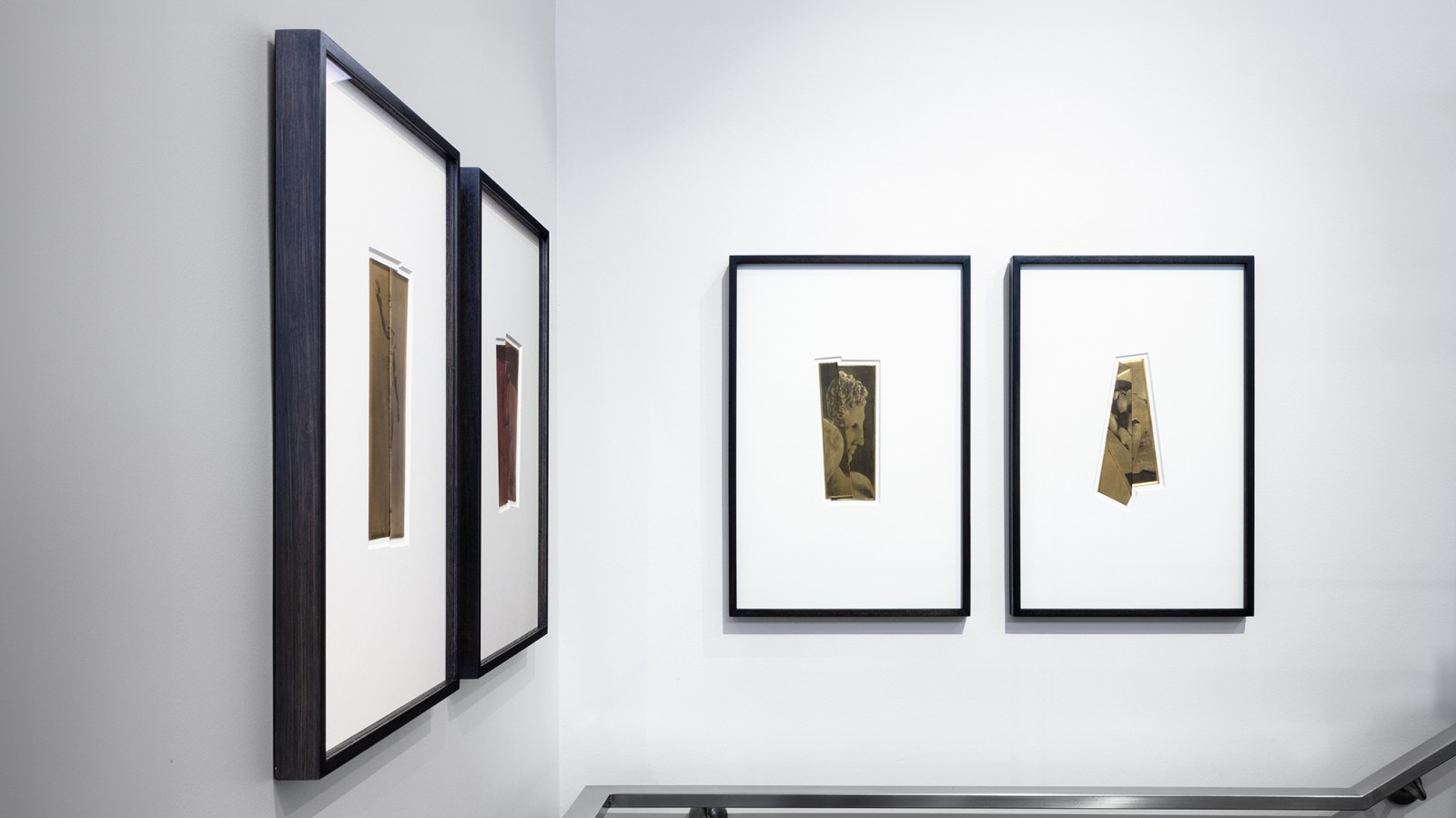
In the gallery above, was a series of large, shimmering gold and aluminium leaf works on sandpaper titled collectively blended portraits. These works employ a traditional gilding technique in a non-traditional method to meld image details of broken statues in museums with details that I notice in other anonymous museum visitors who seem as hypnotized by the broken statuary as I often am.
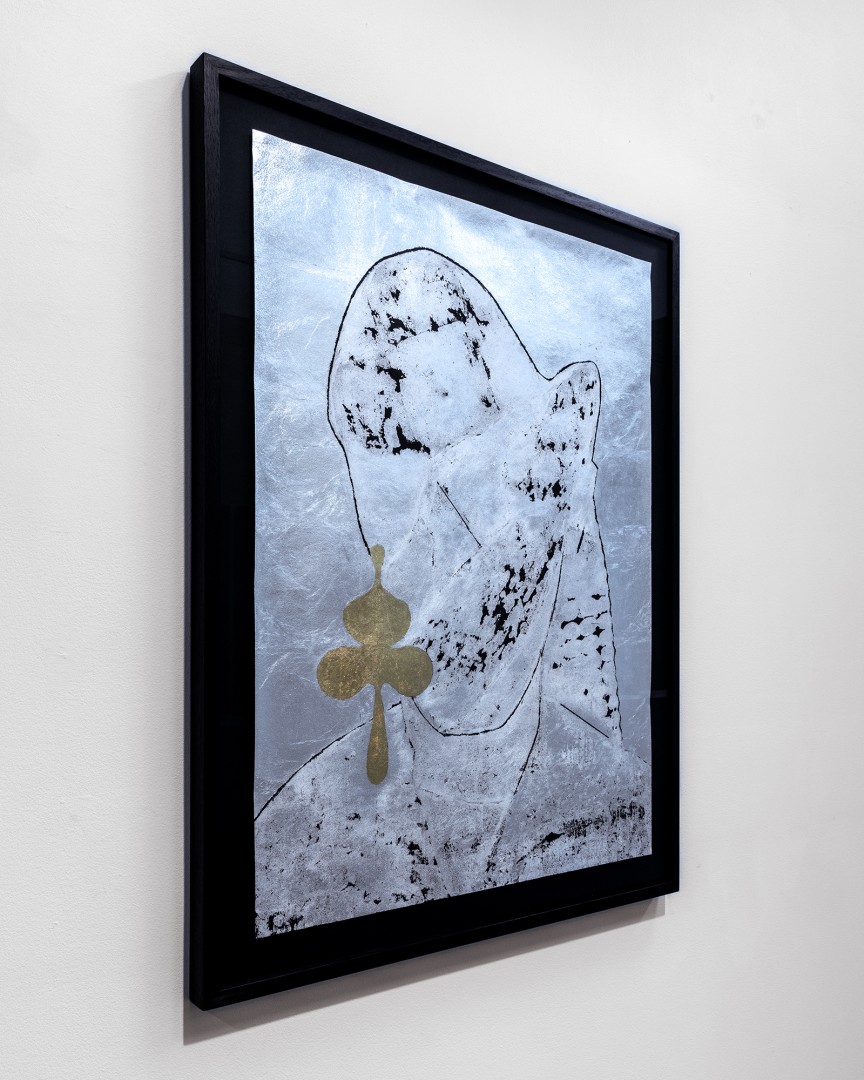
A suite of nine hand printed colour photographs titled Time travels through the body, created from found, scratched and abraded, black and white negatives that represent ancient sculpture, occupied another gallery. The negatives I used to create this body of work were commissioned by museums in the 1950’s. I have come to think of these negatives as damaged artefacts of modernity that cradle images of damaged artefacts of antiquity. The linked (yet distanced) damage connection between the subject and object embodied by the negatives, and the resultant prints, points toward what I think of as an oscillating movement between residues of damage and acts of care. That slow but repetitive movement functions like a pulse throughout the entire exhibition. The final Time travels through the body prints radiate with gem like colour, which is counterpoised by the scratches, abrasions and chemical burns transferred to them from each negative’s own material history. These slick, screen-like, but representationally ruptured images, were presented alongside a series of small reclining human figures cast in lead.
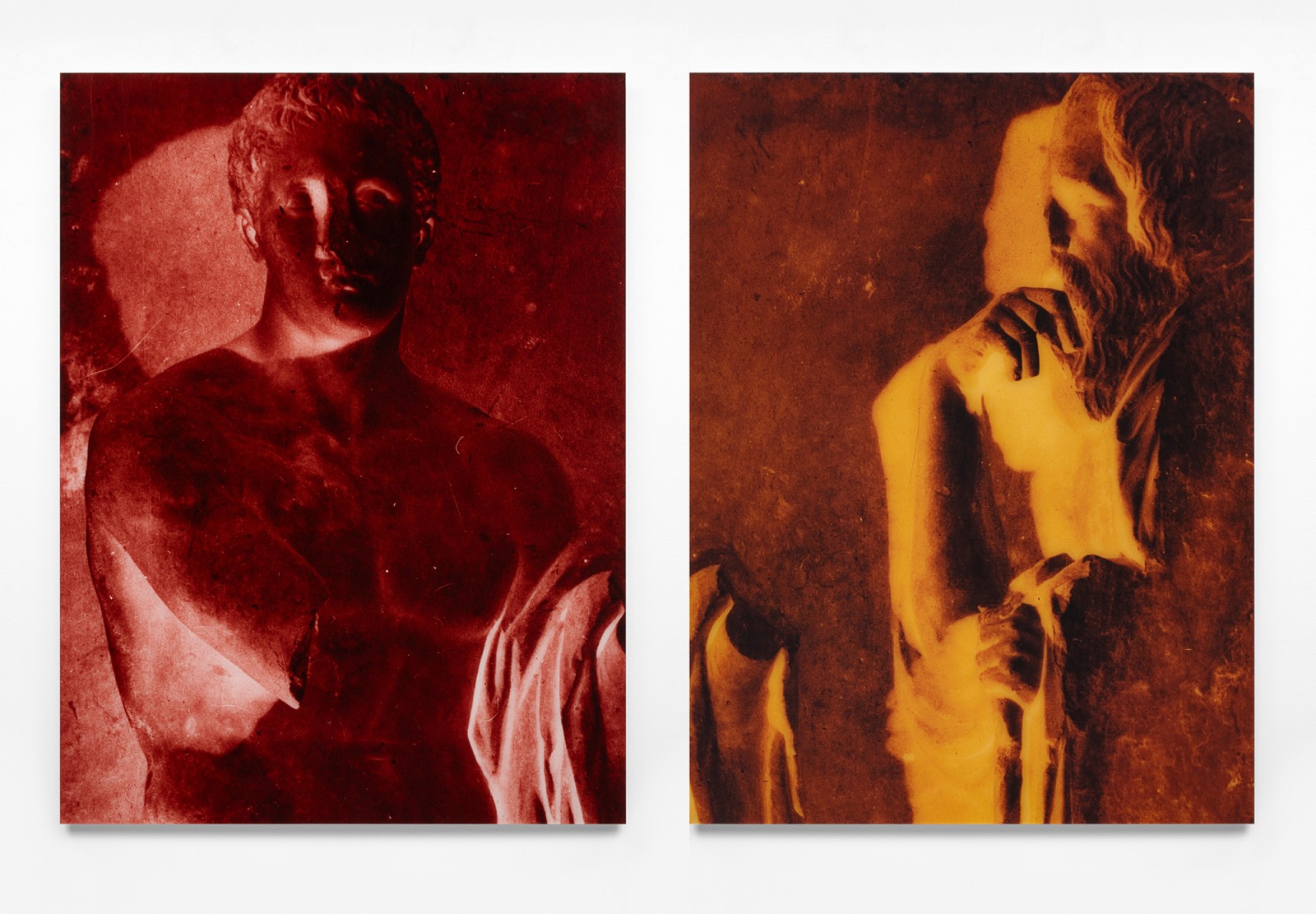
Appearing simultaneously contemporary and ancient, this group of nine, small, highly textural, beach cast sculptures, carry with them vestiges and residues of their places of origin. To create these small lead figures I work in the landscape with the sand-casting process. Working at low- tide on beaches of personal significance to me, I presses a ceramic positive into the wet sand thereby creating a unique, one-pour mould which I fill with liquid lead, melted in situ on a camping stove. Sometimes the figures are made from molten fishing sinkers, at other times with shotgun pellets (this is of relevance as the functional form of the sourced lead has links with the location of each casting). As the molten lead cools shell fragments and other geological material is captured in the surfaces and volumes of cast figure. It becomes an essential element of the figure.
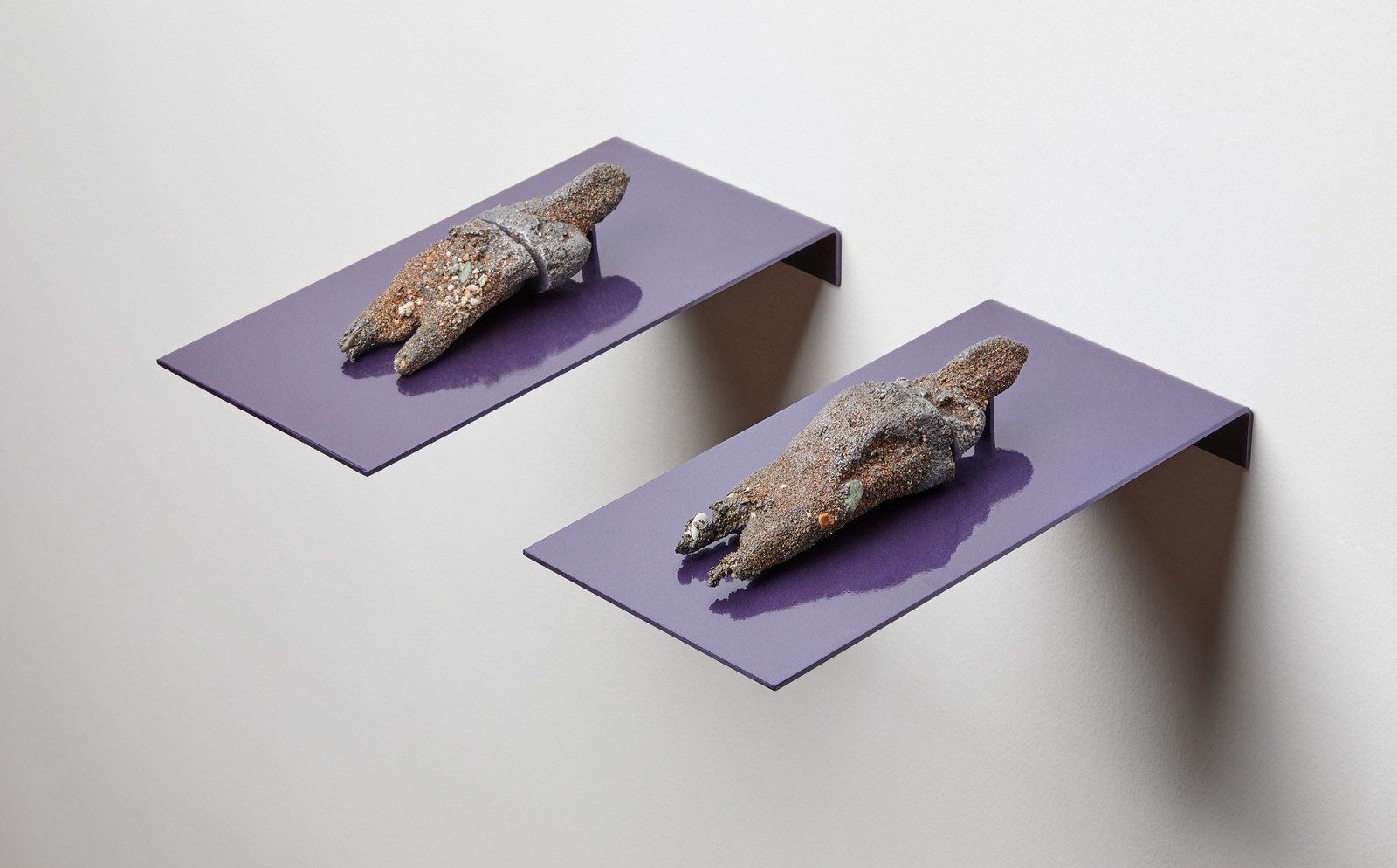
Another, ongoing body of sculptural work included in the exhibition currently comprises more than thirty individual figurative sculptures created from varying types of clay, lead, and bronze. They are are collectively titled Psychopomps which in both ancient Greek ψυχοπομπός, and contemporary English language refers to the spirit entities that without judgement, guide the recently departed to the place of the dead
